Scoutmaster Musings
Archives:
2023 Â 2022 Â 2021 Â 2020 Â 2019 Â 2018 Â 2017 Â 2016 Â 2015 Â 2014 Â 2013 Â 2012 Â 2011 Â 2010 Â 2009 Â 2008 Â 2007 Â 2006 Â 2005 Â
Â

- You lean across the finish line winning the race, while the other guy loses.
- You get first chair trumpet in band and the other guy gets second chair.
- You make the varsity wrestling team, but the other guy in your weight doesn't.
- You sell the most popcorn and get the top-seller prize, and the other guy ...
- Looking out my window, I see first graders lining up for the bus. They run to be first in line, sometimes even getting upset and crying if they are last.
- Driving through town, I see people floor it so they can get past one more car and be first at a stoplight.
Competition is a key part of our society. There should only be one gold medal in an Olympic race; there needs to be state football champions; we need to have records for speed, strength, jumping, throwing, and all those ways we measure our physical abilities. I think this is good competition and healthy, helping us learn to push ourselves to excel and to understand that not everyone gets a soccer trophy in every endeavor.
We do seem to create unnecessary and unhealthy competition in many areas, resulting in a majority of losers and a select few winners, or at leaast a whole lot more stress when it really doesn't need to be that way. Does it matter if we win the church league softball trophy? Do we need to have the most Christmas lights in the neighborhood, or the biggest jack-o-lantern, or the best groomed lawn?
One of the aspects of Scouting I really like and try my best to promote and protect is that every scout can be a winner. It doesn't mean there needs to be a loser on the other side of the field - it just means he won. He met the mark. He set a goal and did it. He pushed himself and accomplished something.
The proponent and opponent in Scouting are the same - the scout. He drives himself to better his skills, develop his abilities, and overcome his weaknesses. There are some specifically measured marks in Scouting, such as completing 6 merit badges to reach Star rank or perform at least six hours of service to reach Life. But, the majority are subjective and relative to the scout's abilities and aptitudes, such as showing improvement for Tenderfoot or demonstrating scout spirit.
Can there be only one Eagle Scout in a troop? No, they can all earn that rank.
Can there by only one 50-Miler recipient, or World Conservation award, or National Honor patrol? No, everyone that sets the goal, completes the work, and turns in the papers gets the recognition.
These are all just recognition of accomplishments. There really are no 'winners' or 'losers' in Scouting. That is because there is no ultimate prize. There is no Lombardy Trophy. There is no gold medal. You might say the Eagle rank is that gold medal, but you'd be incorrect. Eagle rank is just another recognition which can be followed with eagle palms, national outdoor achievement, or Hornaday gold awards.
Implementing the eight methods of Scouting to progress towards the three aims of Scouting in a fun, exciting, challenging way is what Scouting is all about. A person never reaches a point where he is a perfectly fit citizen of perfect character, so a scout never reaches "the end" of Scouting. There is always room for growth, opportunity for more fun and challenge, and something new to try.
So, what place does competition have in Scouting? I feel that competition between patrols and troops is perfectly fine. It builds patrol spirit and gives scouts a tangible reason to practice skills. There are many ways to make competition fun for all, not just the winners. For example, having a recognition for first place but also a prize for everyone if all patrols complete the task in a time limit. That provides incentive to accomplish the goal, even for the least-skilled group.
If you notice there are often a few winners being singled out in your troop, you might want to pause and take a compass check.
Scout On
Speaking of competition, tomorrow's post will include a contest for $50 or more - don't miss it.
| Leave Comment |

Oh no! We're out of matches!
Now what do we do?
It's a good idea to have a couple backup fire starting methods available and a better idea to know how to use them. They aren't all easy, but here's ten ways you could get a fire going - with a little luck and perseverence. The list goes from most to least practical, in my view.
- Matches - simple, cheap, easy to use. Diamond Strike-Anywhere matches or Wooden matches, instead of cardboard, dipped in wax and stored in a film cannister work great in all weather.
- BIC Lighter - as long as you don't crack the plastic container, these are cheap, easy, and usable in all weather. They are difficult for younger scouts.
- Ferrocerium Striker - very easy way to make sparks. As long as you have fine, dry tinder that catches a spark, you're good to go.
- Flint and Steel - the classic. With some practice, sparks are the reward.
- Fire Piston - a fun way to create an ember through simple air compression.
- Bow Drill - (also hand drill) With some sweat and perseverence, you get a lot of smoke and finally some chardust with a glowing ember. This is my favorite 'primitive' method and I have lots of room for growth.
- Magnifying Glass - also a clear ball of ice or water in a baggie can work. Focusing the sun's rays to a point on some good tinder starts it burning. Only useful on sunny days. You can use the concave bottom of a soda can too.
- Fire Plow - same principle as a bow drill, but takes more work and just the right wood.
- Battery and Steel Wool - in an emergency, or just for show, you can shortcircuit the battery through the steel wool which ignites. Not practical for planned fires, but will work in a pinch.
- Piezo-electric Igniter - these are in your gas grill and make a small blue electric spark. It won't get an ember going, but can ignite liquid fuel. Best for experiments, not fire lighting.
You can read more about these fire starting methods at Campfire Dude.
Scout On
| Leave Comment |
This is a Sponsored post written by me on behalf of SPOT. All opinions are 100% mine.
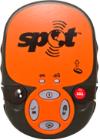
I've told you a few times about the SPOT Satellite GPS messenger that our troop uses on our backpacking adventures. It's a great little gadget that gives you access to rescue help in an emergency, but more commonly lets folks back home track your progress through the wilds. And, when you get home, you can tie your photos to your trek route for an interactive view.
If you missed past deals from the folks at SPOT, here's another one that sounds pretty good. When you buy the new SPOT Messenger, you get a $50 bonus adventure kit that includes 15% off Basic Service, a flotation case, LED flashlight, safety whistle, bandana, lanyard, and keychain. Maybe your troop should put one of these in its budget for the coming year and get it for Christmas.
I like that SPOT is one-way communication. It doesn't beep or chirp or ring with incoming messages, but it keeps everyone at home in touch with our location.
If you only use it for a single Philmont trek, the annual service with tracking would just be around an extra $10/person. But, you'll surely use it for many other outings. It costs our scouts about $2.50/year for the troop to have one. We've used it for backpacking, canoeing, and biking. I've even taken it on 10-mile practice hikes so parents could see when we were approaching the pick-up location so they'd be there on time. It's cheap insurance and a good use of technology in the scouting world.
Scout On| Leave Comment |
 At the troop meeting last night, I got to hand out 3 Zero Hero patches to the adults that slept out last weekend in the snow storm and -8 degree temps. The hope is that all the scouts in attendance will want to get one next month on their Okpik campout.
At the troop meeting last night, I got to hand out 3 Zero Hero patches to the adults that slept out last weekend in the snow storm and -8 degree temps. The hope is that all the scouts in attendance will want to get one next month on their Okpik campout.I also presented two assistant scoutmasters with all their patches, troop neckerchief, and "Trained" patch since they just finished their training last month. They are both in their first year with the troop so it's exciting to have them ready as resources for the next six years.
The majority of the meeting was the quarterly Court of Honor. This one was led by a First Class scout working on his Communications merit badge. He presented all the earned merit badges, did the ceremonies for each rank advancement, and even added a Minute at the end. He was very well prepared and did a great job.
Scout On
| Leave Comment |
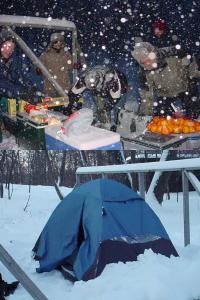 WOW! What a great weekend campout!
WOW! What a great weekend campout!Minnesota had the biggest snowstorm in a long time this weekend, but it worked out just fine for our campout. We left Friday evening and got to Camp Stearns a couple hours before the snow started. It fell all night long and you can see what our Saturday breakfast looked like in the top photo. We were fortunate that we camped south of a high ridge which blocked most of the frigid wind driving from the north.
Saturday was devoted to cooking, sledding, and some sporadic scout games. With the near zero temperatures, keeping interest in games was difficult for the two scouts running the show. We had so many scouts that the troop split into two groups, each with its own heated shelter about 1/4 mile apart.
Saturday evening was spent at a nearby ski hill that was having a "Scout Days" special price. Since many roads were drifted shut and the wind was atrocious with windchill close to -20F, we were practically the only people on the hill. But, what they lost in lift tickets, they more than made up in food sold to the hungry scouts. I just stayed in the ski lodge all evening helping a couple scouts with advancement and chatting with guys that came in for breaks.
I slept in a tent both nights, as did another adult in his own tent. You can see my home this morning before I packed it up. Two other adults built a snow shelter and slept there Saturday night. Everyone else was smart enough to sleep indoors. :-)
The temperature dropped to at least -8F last night so I've now slept out below zero in a tent, in a snow shelter, and under the stars. My Cabela's winter bag does a super job down to about -15F.
At our reflection this morning, scouts shared that they learned some valuable lessons:
- need more layers of clothes
- need easier meals in cold weather
- need more fuel
- warming up inside makes your clothes wet
- cleaning dishes is hard in the cold
Next month, we do it again.
Scout On
| Leave Comment |
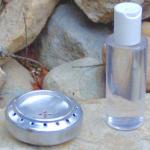 This past summer, at BSA summer camp, four of our scouts did the Wilderness Survival merit badge. As part of that badge, they each made a cool alcohol pocket stove - directed by the camp staff.
This past summer, at BSA summer camp, four of our scouts did the Wilderness Survival merit badge. As part of that badge, they each made a cool alcohol pocket stove - directed by the camp staff. Ken at PK Stoves asked me to try out his Pocket Stove on some camping trips and let him know how I liked it. This is a professionally made popcan alcohol stove. It weighs practically nothing and is intended for lightweight backpacking.
A 2oz. clear plastic filler bottle is included. This holds enough fuel to boil about 8 cups of water - that's 3 meals. I think the best fuel to use is denatured alcohol and is easy to find in the Paint department of any hardware store.
I tried the Pocket Stove on two outings and it worked just great. An aluminum sheet for a windscreen and the stove burned just like my gas stovetop at home, heating water in just a couple minutes.
If you've got people that want to do their own simple cooking for a weekend, this stove works great for 1 or 2 persons. There is practically no weight or space taken up by your stove and fuel. When backpacking around 5 days, the trade-off between combined stove and fuel weight gets fuzzy. Longer than a week on the trail and a white gas stove with a fuel bottle will probably be more efficient - but not as much fun. :-)
Like any tool or piece of gear, I feel these kinds of stoves are practical and safe given appropriate training and respect. For just $10, you get the stove, filler bottle, instructions, and shipping - a pretty easy gift for that outdoors person you know that has almost everything, especially if s/he isn't a DIY type.
Just don't use them on scout outings. In your latest Guide to Safe Scouting, you'll find Soda Can Stoves are prohibited by the BSA. I guess the summer camp staff didn't read that page.
Scout On
| Leave Comment |
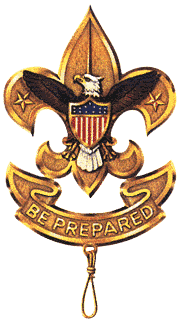
In response to my previous post about recruiting tips, someone asked about specifically recruiting NON-Webelos. Well, here you go. I'd love to hear from anyone that tries them.
There are a lot of 5th and 6th grade boys in your community that were not active in the Cub Scout program. This is a prime time to recruit these boys into your troop, along with Webelos crossing over from Packs.
The best way to recruit these boys is by having scouts talk with them. Consider using these tips to motivate your new scouts to recruit a few more scouts:
- Recruiter Strip - If a scout gets someone to join, the scout gets a patch. And, there's a special spot for it on his uniform.
- First Class Requirement - Push the "tell a friend to join" requirement to be one of the first requirements for all new scouts. There's a better chance of getting someone to join at the same time rather than a year later.
- Free Camping - Every scout that brings a friend on a camping trip, gets to go for free.
- Non-scouting Activity - Plan a non-scouting, two-hour activity just for the new scouts and their friends. Bowling, swimming, basketball, anything physical and indoors that non-scouts will enjoy as much as scouts. Scouts can only sign up with a non-scout buddy.
- Sports Teams - Remind scouts that the end of a sports season in which they play is a great time to ask the other guys on the team, "So, now what are you gonna do?" and invite them to try Scouts.
- Trinkets - our troop has wooden nickels which scouts can give to friends to promote the troop.
- Troop Open House - A specific time planned for introducing boys and parents to scouting. See this document.
- School Talk - If you can get access to your local school, giving a short promotional talk to the 5th grade and/or 6th grade boys can be successful. See Page 20.
- Scout Skill Day - Have scouts invite non-Webelos to your Scout-o-rama to learn some fun scout skills and impress their parents.
- Hidden Recruiting - If you do a fundraiser, include postcards to give with each order. The card asks the buyer to give it to the parent of a 5th or 6th grade neighbor boy and invites him and his parent to call for more information about the troop.
Scout On
| Leave Comment |
This is a Sponsored post written by me on behalf of NAVTEQ. All opinions are 100% mine.
 A few years ago, we had an adult driver arrive at our campsite almost an hour after everyone else. He had an onboard navigation system which his family had nicknamed 'Loulou'.
A few years ago, we had an adult driver arrive at our campsite almost an hour after everyone else. He had an onboard navigation system which his family had nicknamed 'Loulou'.
He would just enter their destination and then trustingly follow the directions and instructions it gave him...
"Turn right at the next intersection."
"Turn left."
He loved this system because it saved him lots of effort remembering directions. Unfortunately, on this outing to a remote area, the system knew of a road that used to connect to another road, but now actually led to a deadend. After the system insisted he use that same road twice, he finally gave up and got help at a local gas station - the old-fashion way.
If he had only upgraded his system's map information, he'd probably have been the first at the campsite and in a calm, worry-free mood.
Most in-car navigation systems are driven by technology from NAVTEQ and the updates are easy to get. By visiting NAVTEQ's map update page, you can find the exact update for your vehicle with the latest road and travel information.
How many people would think of this for a Christmas gift?
You can give it to your wife as a gift that keeps the family safe, makes her driving easier, and doesn't need to be returned for the right size.
You know Dad would be happy to have an up-to-date database of gas stations and new roadways so he never needs to ask directions along the way.
I'd love it if all our Scouters had such a system to make our outings a bit more safe and easy.
This is another good use of electronic technology that doesn't reduce the pleasure of the outdoors. I found out the latest revision of the NAVTEQ data includes:
- 5.5 million miles of road - driving 100mph for 6 years wouldn't cover them all
- 1.8 million points of interest - lots of roadside exploring for scout outings
- 430,000 restaurants - in case the poptarts run out
- 65,000 hotels - for those rained-out campouts
- 96,000 gas stations - for coffee stops, bathroom breaks, junk food, and oh yeah, gas!
Hey, there's no reason you can't get an update for yourself - just say "Merry Christmas to Me"!
| Leave Comment |
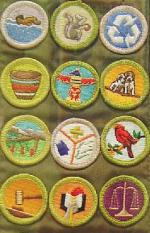 The majority of the over 125 active merit badges introduce scouts to skills, careers, and hobbies which have little to do with Scouting. The goal of the merit badge program is to broaden a scout's experience, not just to improve his scouting skills, and that's why we have Coin Collecting, Dentistry, and Truck Transportation merit badges. They allow scouts to take a different path on the Boy Scout trail.
The majority of the over 125 active merit badges introduce scouts to skills, careers, and hobbies which have little to do with Scouting. The goal of the merit badge program is to broaden a scout's experience, not just to improve his scouting skills, and that's why we have Coin Collecting, Dentistry, and Truck Transportation merit badges. They allow scouts to take a different path on the Boy Scout trail.But, what about those Scouting Skills? Once a scout reaches First Class, does he stop using those skills he demonstrated to earn rank? In many cases, the answer is 'Yes'. Tying knots, performing first aid, and using a map and compass are not activities that occur very often in the everyday life of a scout. Fortunately, some of the merit badges specifically build on scouting skills so scouts can continue to develop their outdoor abilities.
These merit badges are the most useful to help scouts keep their skills strong:
- Backpacking - builds on their camping skills and expands from simple weekend campouts. Great to include in Philmont preparation.
- Camping - promotes more planning and preparation, and requires more camping and cooking experience.
- Cooking - promotes varied and healthy cooking. A good merit badge for scouts planning their own high adventure trip.
- First Aid - almost all 'explain' and 'describe' requirements. Completion of the Red Cross Wilderness and Remote First Aid course pretty much covers all the requirements.
- Hiking - gets scouts out on the trail. I'd say this is the best badge for getting in shape and it's an obvious choice to include in Philmont preparation.
- Orienteering - great exposure to more map and compass skills, crucial for high adventure treks.
- Pioneering - additional knots and lashing work, culminating in a full-scale project planned and executed by the scout.
- Swimming - expands on the First class requirements. A good pre-trek requirement for Sea Base.
- Weather - helps scouts understand how weather happens so they can be more prepared on adventures. This is one area not really covered in rank advancement.
- Nature/Bird Study/Mammal Study/Insect Study/Reptile & Amphibian Study - more exposure to the natural world after the 10 animals and plants requirements.
You could encourage scouts to do these merit badges as a way to build the overall skill level in a troop. Creating a Scout Challenge that includes these badges might be a good incentive.
Scout On
| Leave Comment |
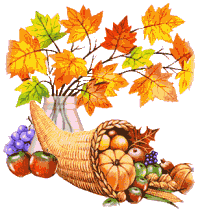 Everyone has their gizmos, gimmics, gadgets, and gear that they wouldn't leave home without. When it comes to Scouting, here's a few things that I'm thankful exist and why:
Everyone has their gizmos, gimmics, gadgets, and gear that they wouldn't leave home without. When it comes to Scouting, here's a few things that I'm thankful exist and why:- Gore-tex - for helping us enjoy camping in the rain
- Victorinox - for making a high quality knife
- Ferrocerium - for making it possible to have sparks any time
- Dutch Ovens - for showing scouts you can cook real food outdoors
- Digital Cameras - for making instant, free memories possible
- Guyot Designs - for imaginitive, innovative products like squishy bowls, firefly light, and splashguards
- Raccoons - for teaching more scouts the value of securing food than all other animals combined
- Tentpole Clips - for saving thousands of minutes that would have been wasted sliding tentpoles through sleeves.
- Polar Fleece - for warmth in all it forms; hats, jackets, balaclavas, pants - everything but snuggies.
- Scout Challenge - for providing an incentive for older scouts to stay active in regular troop stuff.
Scout On and Happy Thanksgiving!
| Leave Comment |
 I expect you've heard the talk of mandatory training for scout leaders coming along. I suppose that's probably really the only way to make it happen - make it required. I'm happy that all but 1 of the Assistant Scoutmasters in our troop have their Trained patch. That's 1 out of 16, and he's just got one more session to complete.
I expect you've heard the talk of mandatory training for scout leaders coming along. I suppose that's probably really the only way to make it happen - make it required. I'm happy that all but 1 of the Assistant Scoutmasters in our troop have their Trained patch. That's 1 out of 16, and he's just got one more session to complete.That's just the basic training required to wear the Trained patch. There's a lot of other Coaching that I'd recommend all adult leaders take to improve the safety and success of their unit activities. It shouldn't be taken because it's required for a patch or to do a tour permit - it should be because you want to be as prepared as possible for anything that may happen.
Here's 10 to consider:
- WRFA - Wilderness and Remote First Aid provides leaders exposure to handling emergencies while out scouting. Whether it's a weekend campout or 10-day Philmont trek, this training is vital knowledge. At least two adults on every outing should have this training.
- CPR - Heart problems can occur in adults at any time, whether hiking or at a troop meeting. All adults and youth over 14 should know how to do CPR and be exposed to AED usage.
- Youth Protection (online) - It's mandatory for all BSA volunteers and is designed to help you keep our youth safe from abuse. You will learn the Boy Scouts of America's Youth Protection Guidelines, signs of abuse, and how to report suspected abuse. Every adult that interacts with youth should take it every two years. Required for 'Trained' patch and Scout Leader's Training award.
- Intro to Outdoor Leader Skills - Introduction to the tenderfoot, 2nd class, and 1st class scouting skills so adults can help scouts complete their requirements. It doesn't make sense for someone to sign off on a first aid or knot tying requirement if he doesn't know the skill well himself. All adults that teach or sign off should take it. Required for 'Trained' patch and Scout Leader's Training award.
- Scoutmaster Specific - Three sections to introduce scoutmasters and assistants to the workings of a Boy Scout troop. Good exposure for all parents, and required for 'Trained' patch and Scout Leader's Training award.
- Safe Swim Defense (online) - Learn the safety guidelines for all water activities in the BSA. All swimming activities in Scouting are required to follow the eight principles known collectively as the Safe Swim Defense plan. A unit that follows the plan can expect a safe, enjoyable aquatic experience. Safe Swim Defense is required for BSA tour permits.
- Safety Afloat (online) - Learn the safety guidelines for boating activities in the BSA. All boating activities in Scouting are required to follow the nine principles of Safety Afloat. With an emphasis on accident prevention through proper preparation and skills, a unit that follows Safety Afloat can expect a safe, enjoyable activity. Safety Afloat is required for BSA tour permits for any trip afloat. /li>
- Trek Safely (online) - Learn how to safely plan and lead a high adventure trek using the BSA guidelines. Covers seven key safety points about trekking and is recommended for adult leaders organizing any type of trek. You will watch a brief video broken into two sections and answer questions after each section.
- Climb On Safely (online) - Learn the BSA climbing guidelines. Covers eight key safety points about climbing and rappelling and is recommended for adult leaders organizing any type of climbing outing. You will watch a brief video broken into three sections and answer questions after each section.
- Weather Hazards (online) - Learn to plan for bad weather and make good decisions when you are out in it. Must be completed prior to requesting a tour permit from the BSA. The module presents safety precautions for eight different types of weather, as well as planning, preparation, and traditional weather signs.
There are also a bunch of Supplemental Training Modules at scouting.org that cover specific topics.
Scout On
| Leave Comment |
 How many matches does it take a Boy Scout to light a fire? I've seen it done with 58 matches - seriously! But, it really should just take one match. Preparing the fire lay is important, but so is lighting the match.
How many matches does it take a Boy Scout to light a fire? I've seen it done with 58 matches - seriously! But, it really should just take one match. Preparing the fire lay is important, but so is lighting the match.There are better and worse ways to light a match. Many people hold with index finger and thumb and strike away, using the thumb to apply most of the friction pressure. First off, this puts a lot of stress on the thin matchwood which results in often broken matches. It also puts the match tip up and out in the wind where it more often than not goes out right away. Finally, it promotes thrusting the match into the tinder immediately, with just the chemicals flaring and before the match wood has started to burn.
Consider trying this method instead:
- Hold the match like writing with a tiny pencil
- Place your index finger and thumb up by the butt of the match, rather than the head
- Place your middle finger close to the head of the match
- Use your middle finger to put pressure on the matchhead to box
- Strike the match towards you rather than away from you
- Let the matchwood start burning before placing the match in your fire.
Placing your middle finger close to the head greatly reduces the chance of breaking the match. Since it is not used to hold the match, you can easily move it away when the match lights. After the striking motion, the match is left held between your index finger and thumb with the match head down and cupped in your hand, protected from wind. In this position, you can give the match wood time to catch and then light your prepared fire.
Scout On
| Leave Comment |
Comments:
Â
Feb 25, 2023 - Joe Patterson
Mar 16, 2023 - Adam John
Jan 21, 2024 - Johnna Downing
Scouting 2024  -  Ask a Question  -  Add Content
Just for Fun: Socializing merit badge




Â
Â
Â
Â
Find more Scouting Resources at www.BoyScoutTrail.com



 Follow Me, Scouts
Recent Comments